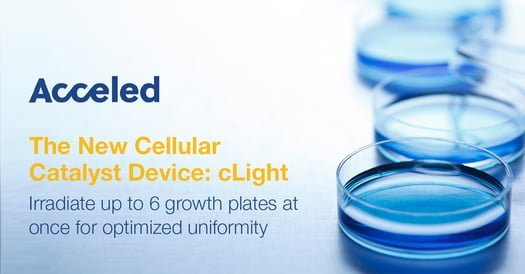At Acceled, we are constantly inspired by our customers' groundbreaking research in the life and environmental sciences. From revolutionary drug development to exploring renewable energy sources and pollution management strategies, their efforts have yielded substantial progress toward creating a better tomorrow.
Our benchtop tools, including photoreactor instrumentation, have been integral to this progress, enabling our customers to explore new avenues of scientific discovery. We hope that our partnership with scientists and researchers from around the globe will continue to serve as a catalyst for further advances in these fields.
Absorption and degradation of pollutants through organic matter:
In these studies, researchers used metal-organic nanomaterials and cobalt and nitrogen co-doped anatase nanoparticles to absorb and degrade airborne and waterborne pollutants.
Metal-organic framework-based nanomaterials for adsorption and photocatalytic degradation of gaseous pollutants: recent progress and challenges
An important topic for environmental remediation has been the development of porous nanomaterials. These metal-organic frameworks (MOF) are being seen as an alternative to traditional, inorganic porous materials. MOFs are demonstrating their ability to be efficient absorbents or catalysts in gas separation, solar energy conversion, and photocatalytic applications.
Visible light-driven photodegradation of triclosan and antimicrobial activity against Legionella pneumophila with cobalt and nitrogen co-doped TiO2 anatase nanoparticles
Triclosan is a common antimicrobial agent and common aquatic pollutant. Previous methods of degrading this pollutant were attempted using UV irradiated TiO2 proved inefficient. Cobalt and nitrogen co-doped anatase nano-catalysts (Co-TiO2-N) were effective at degrading triclosan under UV and visible light.
Recyclable materials and solar energy:
These studies pertain to the development of materials that contribute to environmental sustainability such as creating recyclable materials and developing solar cells.
Visible-light-promoted photocatalyst- and additive-free intermolecular trifluoromethyl-thio(seleno)cyanation of alkenes
A stable and recyclable CF3 source and an inexpensive thiocyanating agent were used to promote a highly selective and efficient strategy for the trifluoromethyl-thiocyanation of alkenes under transition-metal, photocatlyst, and additive-free conditions. This protocol is economical and environmentally benign. It can be used for styrenes, acrylates, and unactivated alkenes.
Graphene and its derivatives for the development of solar cells, photoelectrochemical, and photocatalytic applications
Graphene has proven to have incredible properties for photoelectrochemical applications and the development of next generation systems. Novel graphene-based materials are being used in a wide-range of applications like the development of solar cells and the photocatalytic decomposition of organic pollutants.
Single-site and nano-confined photocatalysts designed in porous materials for environmental uses and solar fuels
Silica-supported Ti catalysts have fascinating properties such as single-site catalysts to nanoparticles, their surface-chemistry engineering, and the fabrication of nanocatalysts. Their large surface area, controllable pore channels, and transparency to UV/vis is useful for developing porous materials for various environmental uses and solar fuels.

Want to accelerate your research?
Simultaneously irradiate up to 6 growth plates with our cLight. Find out how it can bring your benchtop added versatility and consistency:
Drug discovery and pharmaceutically relevant scaffolding:
These studies pertain to the development of pharmaceutical drugs and pharmaceutically relevant scaffolds.
Small molecule photocatalysis enables drug target identification via energy transfer
Identifying small molecule drugs using phenotypic screening is a formidable challenge without knowledge of their associated protein targets. Identifying these targets is an important step in drug discovery. A broadly general platform for photocatalytic small molecule target ID was used to identify these small molecule drugs.
Metallaphotoredox-Catalyzed C–S Cross-Coupling between Heteroaryl Bromides and α-Thioacetic Acids to Access Biaryl Thioethers
Researchers have indicated a unique way for C-S cross-coupling to occur which allows for cross-coupling between building blocks containing pharmaceutically relevant scaffolds.
Visible light-promoted Selectfluor-mediated quinone functionalization
The anti-malarial drug, parvaquone, was synthesized in a single step. This was done using a visible light-promoted metal-free cross-dehydrogenative-coupling (CDC) method for the alkylation of 1,4-naphthoquinones and Selectflour as a hydrogen atom transfer (HAT) agent.
Photocatalysis in the Life Science Industry
Chemists in the life science industry need mild and robust synthetic methodologies in the pursuit of new pharmaceuticals and agrochemicals. This article is an overview of the synthetic methodologies developed and strategic applications in chemical synthesis as well as the state-of-the-art photoreactor technology.
Our combination of advanced hardware, user-friendly interfaces, and powerful software allows researchers to easily manipulate and optimize their experiments for unparalleled results without complicated adjustments.



